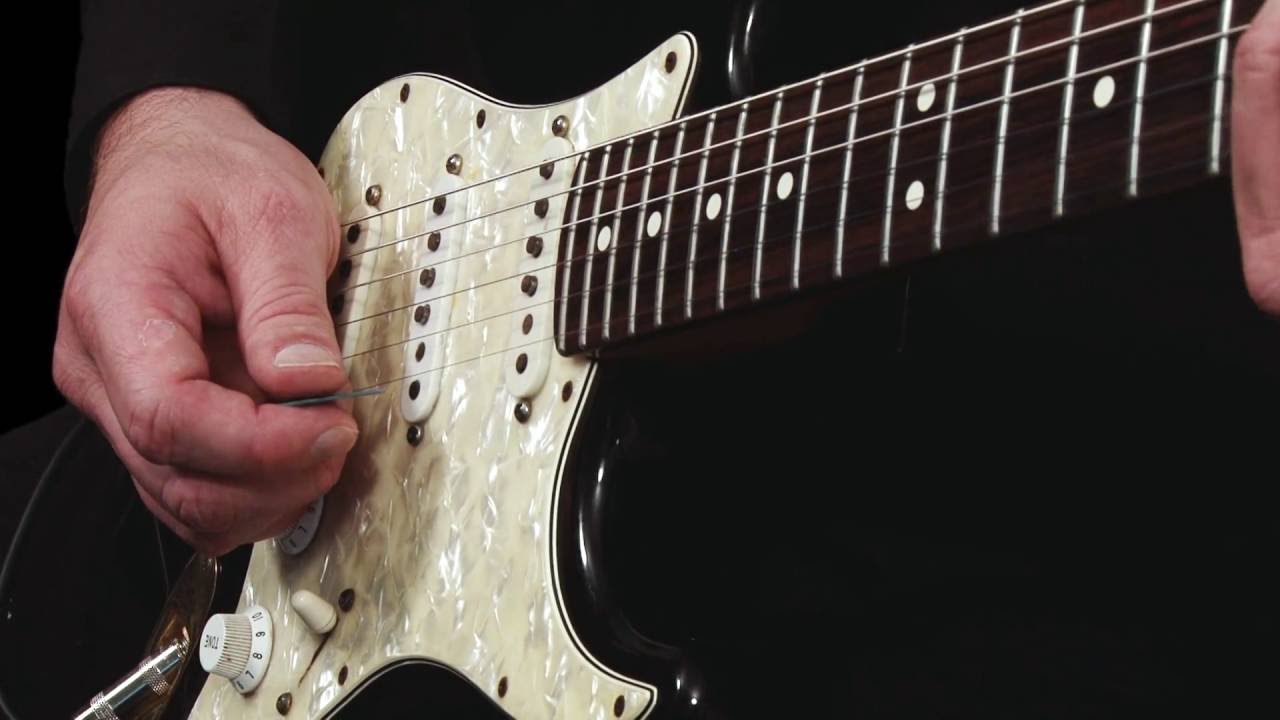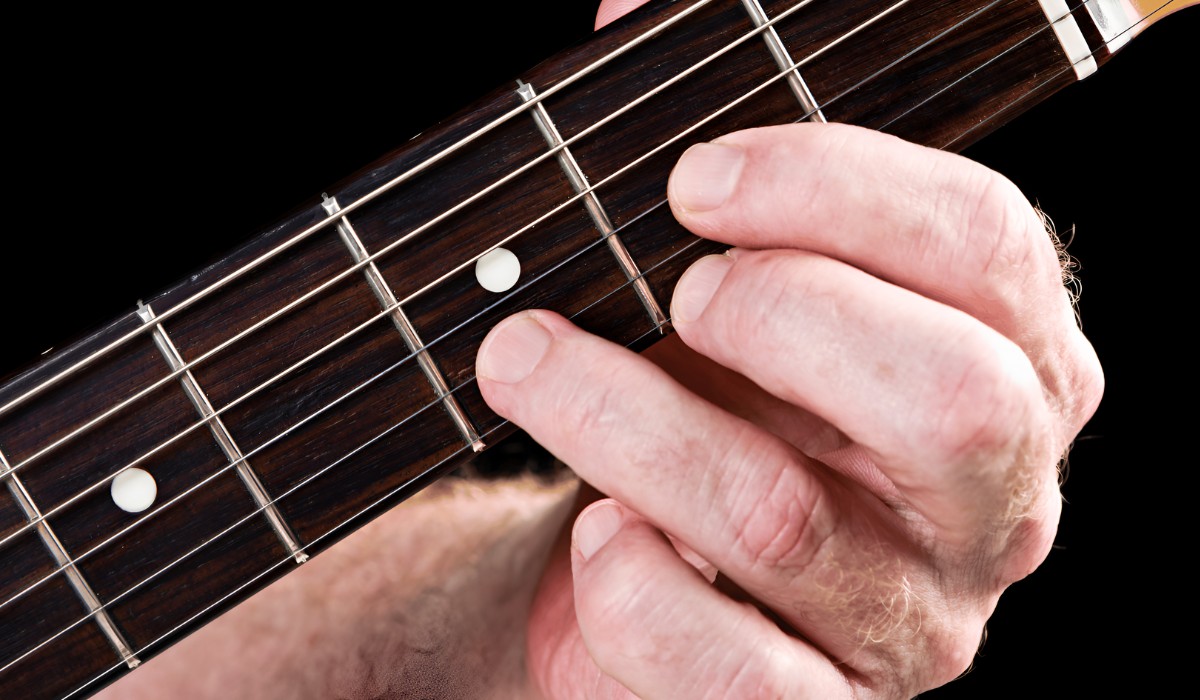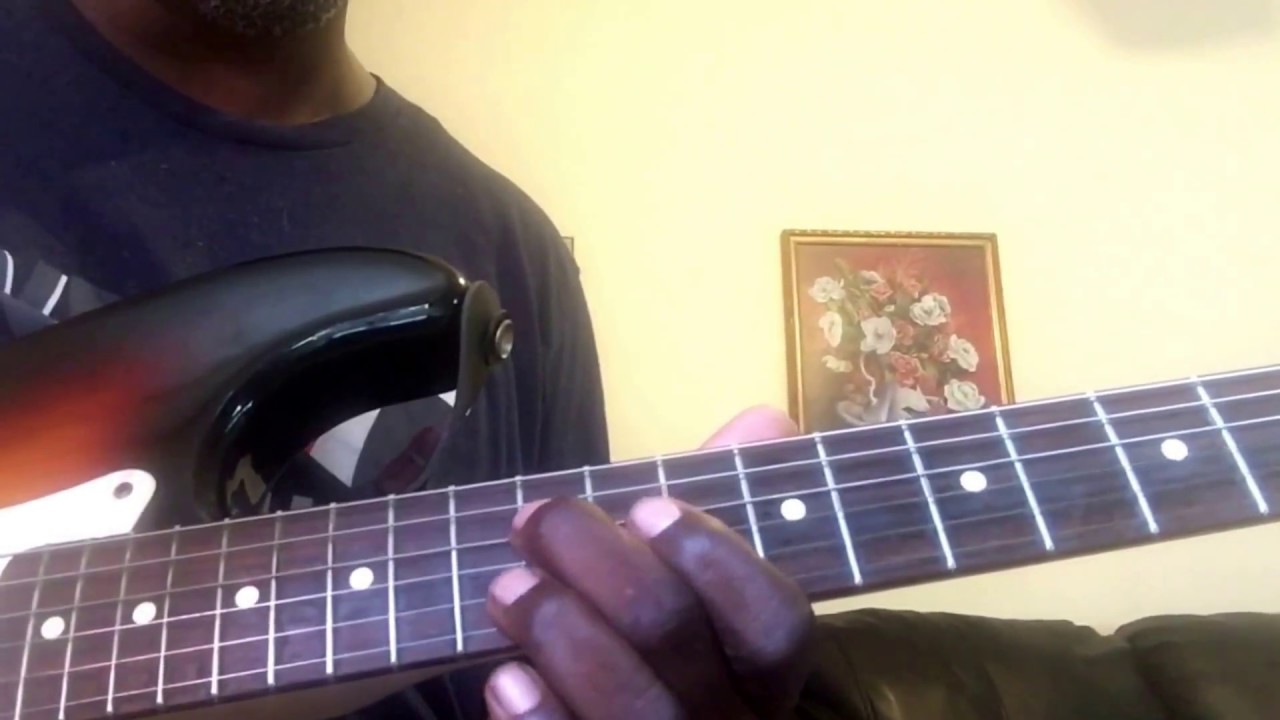Introduction
So, you've just picked up an electric guitar and you're eager to start strumming out some killer rhythms. Well, you've come to the right place! Mastering the art of strumming on an electric guitar is a crucial skill for any aspiring guitarist. Whether you're into rock, blues, jazz, or any other genre, having a strong command of rhythm will take your playing to the next level.
Strumming on an electric guitar is not just about hitting the strings in a haphazard manner; it's about creating a groove, a vibe, and adding depth to your music. It's the heartbeat of your sound, the driving force behind the melody, and the glue that holds everything together.
In this comprehensive guide, we'll delve into the intricacies of strumming rhythm on an electric guitar. From understanding the fundamentals of rhythm to mastering basic strumming patterns and adding dynamics to your playing, we'll cover everything you need to know to become a proficient rhythm guitarist.
Whether you're a beginner looking to nail down the basics or an intermediate player aiming to refine your strumming technique, this guide is tailored to help you elevate your skills and unleash your full potential on the electric guitar.
So, grab your guitar, plug in your amp, and let's embark on this rhythmic journey together. By the end of this guide, you'll be strumming with confidence, precision, and a newfound sense of musicality. Let's dive in and discover the electrifying world of rhythm guitar!
Understanding Rhythm
Rhythm is the lifeblood of music, and understanding its essence is paramount for any guitarist. In the context of strumming on an electric guitar, rhythm refers to the pattern of beats and accents that form the foundation of a musical piece. It’s what makes you tap your foot, nod your head, and feel the groove.
At its core, rhythm is a combination of time and movement. It’s the pulse that propels a song forward, dictating the pace and creating a sense of momentum. When strumming on an electric guitar, you’re not just playing individual notes; you’re weaving them together in a rhythmic tapestry that shapes the character of the music.
One of the fundamental elements of rhythm is the time signature, which denotes the number of beats in each measure and the type of note that receives the beat. Common time signatures include 4/4 (four beats per measure), 3/4 (three beats per measure), and 6/8 (six beats per measure, grouped in threes).
Understanding rhythm also involves grasping the concept of subdivisions, which divide each beat into smaller units. These subdivisions, such as eighth notes, sixteenth notes, and triplets, add depth and complexity to your strumming patterns, allowing you to create intricate rhythms and syncopated grooves.
Moreover, mastering rhythm entails internalizing the concept of accents – emphasizing certain beats or notes to create a sense of emphasis and drive. Accents inject vitality into your strumming, infusing it with energy and shaping the overall feel of the music.
Whether you’re counting out the beats, feeling the pulse, or syncing up with a drummer, developing a keen sense of rhythm is essential for every guitarist. It’s the rhythmic foundation that underpins your playing, enabling you to lock in with the band, captivate your audience, and breathe life into every note you strum on your electric guitar.
Holding the Pick
Before diving into strumming patterns, it’s crucial to establish a solid foundation by mastering the art of holding the pick. The way you hold your pick can significantly impact your strumming technique and overall sound. While there’s no one-size-fits-all approach, there are fundamental principles to keep in mind when gripping the pick.
First and foremost, hold the pick between your thumb and index finger. The pick should rest against the side of your index finger, with a small portion protruding beyond your fingertip. This allows for optimal control and precision when strumming the strings.
Experiment with the angle at which you hold the pick. Some guitarists prefer a slight tilt, angling the pick to strike the strings at an oblique orientation. Others opt for a more perpendicular approach, holding the pick straight on. Find what feels comfortable for you and allows for smooth, fluid movement across the strings.
Consider the amount of pick protrusion. While a longer protrusion offers greater leverage and power, a shorter protrusion provides enhanced control and finesse. Strike a balance that suits your playing style and the specific sound you aim to achieve.
Furthermore, be mindful of the pick’s point of contact with the strings. Aim to strike the strings with the tip of the pick, allowing for a clean and precise attack. Avoid excessive pick depth, as it may lead to muddled or muted strums.
As you acquaint yourself with different strumming patterns and techniques, pay attention to how your pick-hand wrist and arm move. Strive for relaxed, fluid motion, allowing the pick to glide effortlessly across the strings. Tension in the hand and wrist can impede your strumming dexterity and lead to fatigue.
Ultimately, the key to holding the pick lies in finding a comfortable and natural grip that facilitates seamless strumming and empowers you to express yourself musically. With practice and experimentation, you’ll discover the nuances of pick control and develop a personalized approach that enhances your rhythm guitar prowess.
Basic Strumming Patterns
Once you’ve familiarized yourself with holding the pick, it’s time to delve into basic strumming patterns that will lay the groundwork for your rhythmic journey on the electric guitar. These foundational patterns serve as the building blocks for countless songs across various genres, providing a solid framework for your strumming technique.
One of the most common strumming patterns for beginners is the downstroke strum. This involves striking the strings in a downward motion, typically starting from the sixth (lowest) string and sweeping across to the first (highest) string. The downstroke pattern is straightforward and forms the backbone of many simple chord progressions.
Expanding upon the downstroke pattern, the upstroke strum adds an upward motion, completing the full cycle of strumming. After striking the strings with a downstroke, reverse the motion to strum upward, starting from the first string and moving towards the sixth string. Practice transitioning between downstrokes and upstrokes to achieve a smooth and continuous strumming motion.
As you grow more comfortable with downstrokes and upstrokes, you can explore combining them to create versatile strumming patterns. The classic down-up strumming pattern alternates between downstrokes and upstrokes, providing a rhythmic pulse that propels the music forward. This pattern is foundational in countless songs and can be adapted to suit various tempos and styles.
Another essential strumming pattern is the “four-to-the-floor” rhythm, characterized by consistent downstrokes on each beat. This pattern is prevalent in rock, pop, and punk music, driving the music with a steady, driving force. Mastering the four-to-the-floor pattern equips you with a powerful tool for anchoring your rhythm playing.
As you acquaint yourself with these basic strumming patterns, focus on maintaining a steady tempo and consistent dynamics. Strive for clarity and precision in your strumming, ensuring that each note rings out with clarity and purpose. Developing a strong foundation in basic strumming patterns will set the stage for exploring more intricate rhythms and embellishments as you progress on your rhythmic journey.
Adding Dynamics to Your Strumming
Mastering the art of strumming on an electric guitar goes beyond executing patterns mechanically; it involves infusing your playing with dynamics to evoke emotion and depth. Dynamics in strumming encompass the variation in volume, intensity, and articulation, allowing you to convey expression and nuance through your rhythmic performance.
One of the fundamental elements of dynamic strumming is controlling the force with which you strike the strings. Experiment with varying degrees of attack, from gentle caresses to assertive strikes, to imbue your playing with a spectrum of tonal shades. By modulating your pick’s impact on the strings, you can create contrasting dynamics that captivate listeners and breathe life into your music.
Furthermore, explore the concept of accenting certain beats within a strumming pattern. By emphasizing specific downstrokes or upstrokes, you can inject rhythmic vitality and direction into your playing. Accents add a sense of urgency and momentum, shaping the ebb and flow of the music and drawing attention to pivotal moments within the rhythm.
Integrating palm muting into your strumming technique is another effective way to introduce dynamics. By lightly resting the edge of your picking hand against the strings near the bridge, you can produce muted, percussive tones that add texture and rhythmic intricacy to your playing. Experiment with varying degrees of palm pressure to achieve nuanced shades of muted articulation.
Exploring strumming dynamics also entails incorporating rhythmic syncopation and subdivision accents. By subdividing beats and infusing offbeat accents into your strumming patterns, you can create polyrhythmic textures and syncopated grooves that elevate the rhythmic complexity of your playing.
Moreover, harness the potential of your guitar’s tone and volume controls to shape the dynamics of your strumming. Adjusting the tone knob can yield warmer or brighter timbres, while modulating the volume knob enables you to craft crescendos, diminuendos, and expressive swells that add a dynamic arc to your strumming passages.
By embracing the art of dynamic strumming, you’ll transform your rhythmic playing from mere notes and chords into a rich tapestry of expression and feeling. Infusing your strumming with dynamics empowers you to convey emotion, create tension and release, and engage your audience on a profound musical level.
Common Strumming Mistakes and How to Fix Them
As you embark on your rhythmic journey with the electric guitar, it’s essential to be aware of common strumming pitfalls that may hinder your progress. By identifying these mistakes and implementing corrective measures, you can refine your strumming technique and elevate your rhythmic prowess.
One prevalent mistake among beginners is erratic strumming inconsistency, resulting in uneven timing and erratic dynamics. To address this, focus on maintaining a steady tempo and even-handed strumming motion. Practice with a metronome to internalize a consistent pulse and strive for uniformity in your strumming dynamics.
Another common error is excessive tension in the strumming hand and wrist, leading to rigid, stilted playing. To remedy this, cultivate a relaxed and fluid strumming motion, allowing your hand to move with ease and suppleness. Check for unnecessary tension and make conscious efforts to loosen your grip on the pick, fostering a more natural and relaxed strumming technique.
Many guitarists struggle with imprecise strumming, resulting in unintentional string muting or muffled notes. This often stems from improper pick placement or inconsistent pick depth. To rectify this, focus on striking the strings with the tip of the pick and maintaining a consistent pick depth throughout your strumming patterns. Pay attention to the clarity and articulation of each strummed note, ensuring that they resonate with clarity and definition.
Furthermore, overlooking the role of the fretting hand in strumming can lead to muddled chord transitions and lackluster rhythmic precision. Coordinate the movements of your pick hand and fretting hand, ensuring that chord changes align seamlessly with your strumming patterns. Practice transitioning between chords with fluidity and accuracy, synchronizing the actions of both hands to achieve cohesive strumming and chord changes.
Struggling with maintaining a balanced dynamic range is another common stumbling block for guitarists. This may manifest as monotonous strumming devoid of expressive peaks and valleys. To counter this, experiment with varying degrees of pick attack, accentuation, and palm muting to introduce dynamic contrast and tonal diversity into your strumming. Embrace the full spectrum of dynamics, from delicate whispers to commanding roars, to imbue your playing with emotive depth.
By recognizing and addressing these common strumming mistakes, you can refine your technique, cultivate expressive strumming, and unlock the full potential of your rhythmic prowess on the electric guitar.
Tips for Practicing Rhythm on an Electric Guitar
Mastering rhythm on the electric guitar is a journey that demands dedication, patience, and strategic practice. Here are essential tips to enhance your rhythmic prowess and elevate your strumming skills:
- Embrace the Metronome: Utilize a metronome as a steadfast companion in your practice sessions. It serves as a reliable guide for honing your sense of timing, facilitating steady tempo control, and fostering rhythmic precision.
- Isolate Strumming Patterns: Break down complex strumming patterns into manageable segments. Focus on mastering individual components before integrating them into complete patterns, allowing for meticulous attention to detail and gradual skill development.
- Explore Variations: Experiment with diverse strumming patterns, tempos, and styles to expand your rhythmic repertoire. Embrace the versatility of rhythm guitar by delving into genres ranging from blues and rock to funk and reggae, broadening your rhythmic dexterity.
- Sync with Recordings: Play along with recordings of your favorite songs to synchronize your strumming with established rhythms. This immersive practice method enhances your ability to lock in with a band’s groove, internalize diverse rhythmic feels, and adapt to different musical contexts.
- Dynamic Control: Cultivate dynamic nuance by practicing variations in pick attack, accentuation, and palm muting. Develop the ability to seamlessly transition between subdued strumming and forceful accents, infusing your playing with expressive depth and rhythmic vitality.
- Chord Progression Integration: Integrate strumming practice with chord progressions to fortify your rhythmic and fretting hand coordination. Focus on smooth chord transitions and seamless strumming patterns, amalgamating both elements into cohesive, harmonious playing.
- Ear Training: Sharpen your ear for rhythmic nuances by actively listening to diverse musical styles. Analyze the rhythmic intricacies of songs, internalize rhythmic motifs, and cultivate a discerning ear for subtle rhythmic variations and accents.
- Consistent Practice: Dedicate regular, focused practice sessions to rhythm guitar, incorporating deliberate repetition and gradual refinement of strumming techniques. Consistency is key to reinforcing muscle memory, refining timing, and solidifying rhythmic proficiency.
- Collaborative Playing: Engage in collaborative jam sessions with fellow musicians to enhance your rhythmic adaptability and ensemble dynamics. Interacting with other instrumentalists cultivates a keen sense of rhythmic interplay, fostering cohesive musical synergy.
- Performance Integration: Seamlessly integrate rhythmic practice into performance contexts, whether in a band setting or solo performance. Embodying rhythmic confidence and precision during live or recorded performances solidifies your rhythmic aptitude and stage presence.
By integrating these tips into your practice regimen, you’ll fortify your rhythmic foundation, expand your expressive range, and unleash the full potential of your strumming on the electric guitar.

























